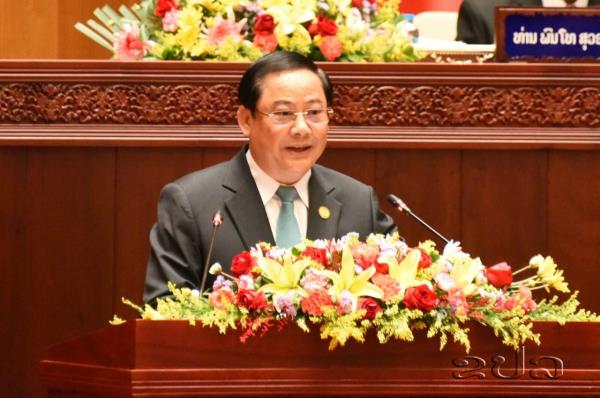KPL
(KPL) Laos’ annual economic growth has stood at 4.03% over the past two and half years. The number is slightly higher than 4%, the target approved by the National Assembly for the 2021-2025 period.

Prime Minister Sonexay Siphandone told the 6th ordinary session of the National Assembly on Oct 31
(KPL) Laos’ annual economic growth has stood at 4.03% over the past two and half years. The number is slightly higher than 4%, the target approved by the National Assembly for the 2021-2025 period.
The economy is expected to grow by 4.2% this year, lower than 4.5% set months earlier. Due to depreciating national currency Kip, Gross Domestic Product (GDP) per capita is on a decreasing trend and expected to reach US$1,824 this year (plan – US$1,625). The government has an ambitious plan to achieve an annual GDP per capita of US$2,880 by 2025.
Gross National Income (GNI) per capita is expected to reach US$1,712 this year (plan - US$ 1,534) as the government is trying to record a GNI per capita of US$2,280 by 2025.
“Over the past two and half years, the government has attached importance to organizational restructuring in the income and expense sector along with modernization in the finance and budget sector to ensure a breakthrough change and the government’s exceeding of its revenue collection target for two consecutive years,” Prime Minister Sonexay Siphandone told the 6th ordinary session of the National Assembly on Tuesday.
In an effort to address issues with respect to monetary instability, high inflation and fluctuating exchange rates, the government has instructed the Bank of the Lao PDR to use in an integrated manner all mechanisms it has to keep M2 (total money supply) at an appropriate level and promote economic growth, focused its foreign currency use on priority imports, abolished private exchange shops and limit currency exchange service to commercial banks.
The ratio of foreign currency from exports transacted through banking system has increased from around 31% in 2020 to 41.32% in the first nine months of 2023. The ratio is expected to exceed 50% by the end of this year.
Foreign reserve has risen from 3.6 months of imports in 2020 to 4.3 months of imports by the end of last month.
The positive developments have helped decrease inflation from 40% in mid 2022 to 25.69% in September 2023, according to the premier.
“Addressing the problem requires all parties, all sectors, at both central and provincial levels, and legal entities and individuals in the society to take part in decreasing the use of foreign currencies for unnecessary purposes and consider this as an expression of their patriotism,” said the Prime Minister.
KPL